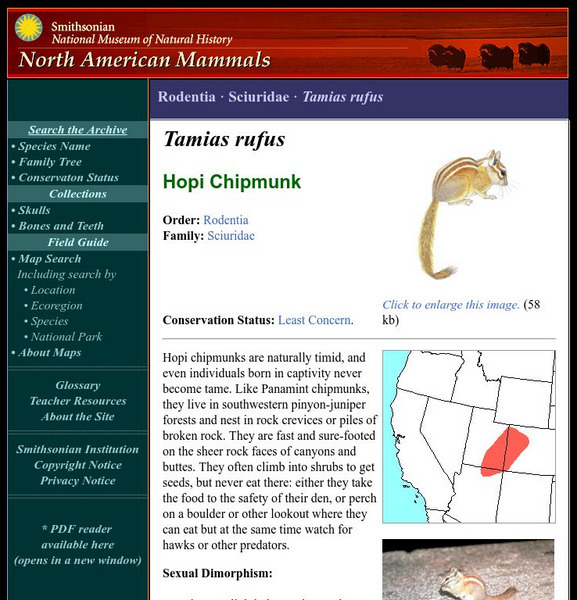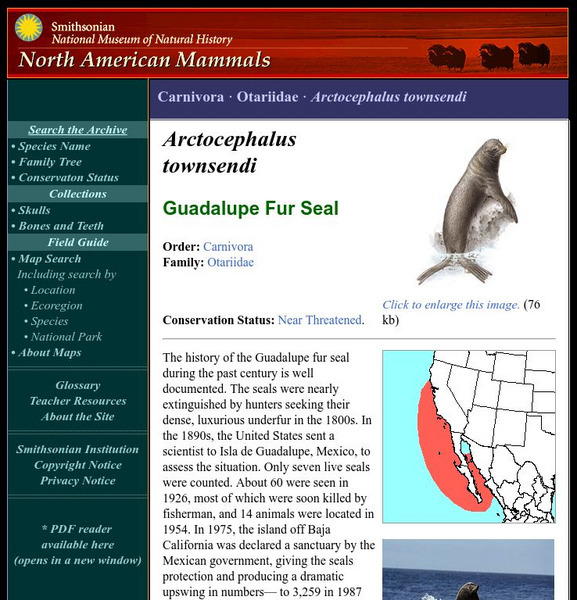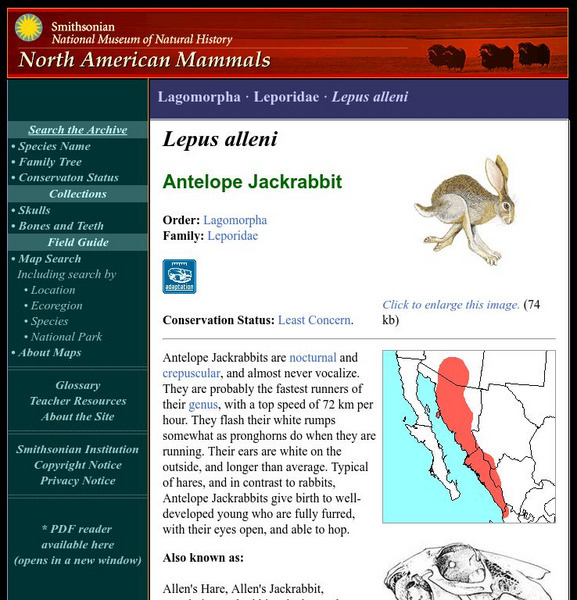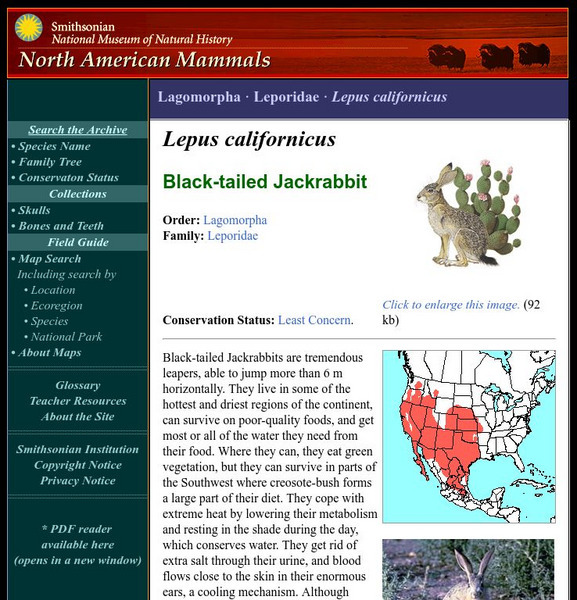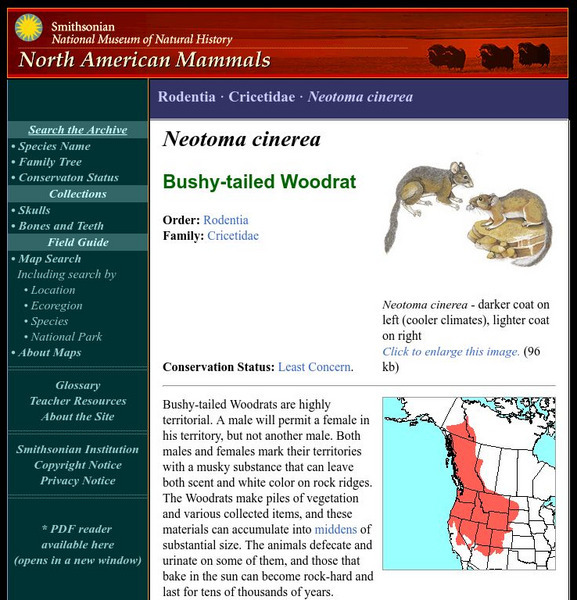American Museum of Natural History
American Museum of Natural History: O Logy: Stuff to Do: Space Travel Guide
What makes science fiction so exciting? Read some examples of the genre and then create your own science fiction story about space travel. Use the supplied "travel guide" to generate ideas and structure your plot.
American Museum of Natural History
American Museum of Natural History: Ology: Gravity
Flip the card, and learn about gravity.
American Museum of Natural History
American Museum of Natural History: O Logy: Stuff to Do: Make a Dna Model
Learn about DNA by building a model of its double-strand structure.
American Museum of Natural History
American Museum of Natural History: Nuclear Power O Logy Card
OLogy cards are like virtual baseball cards about all kinds of science topics. This card is about nuclear power. See if you can answer a few questions when you're done reading.
American Museum of Natural History
American Museum of Natural History: Northern Spotted Owl O Logy Card
OLogy cards are like virtual baseball cards about all kinds of science topics. This one is about the northern spotted owl and it contains information about the habitat, diet, and other ecological information.
American Museum of Natural History
American Museum of Natural History: Wind Power O Logy Card
OLogy cards are like virtual baseball cards about all kinds of science topics. This card is about wind power. See if you can answer a few questions when you're done reading.
American Museum of Natural History
American Museum of Natural History: Taste a Smell Test
Take the jellybean test to see how your sense of smell enhances taste.
American Museum of Natural History
American Museum of Natural History: Read With Your Fingers
Use braille to create a message for a friend.
American Museum of Natural History
American Museum of Natural History: Draw Your Nervous System
Explore your nerves by creating a life-sized drawing.
American Museum of Natural History
American Museum of Natural History: What Do You Know About the Universe?
Test your knowledge about the Universe with this quiz.
American Museum of Natural History
American Museum of Natural History: Piloting Red Rover
Do you have what it takes to drives a robot on Mars?
American Museum of Natural History
American Museum of Natural History: O Logy: Magnificent Madagascar
Scientist Christopher Raxworthy, who studies the reptiles of Madagascar, explains the nature of his work.
American Museum of Natural History
American Museum of Natural History: Peru O Logy Card
Turn over this interactive OLogy flash card to learn about Peru, its ancient people and their descendants. Find fast facts, questions and answers, and similar bite-size pieces of information about the country.
University of Florida
Baldwin Library: The Pictorial Museum of Sport and Adventure by F. Warne and Co.
This is an online photocopy of the original of the children's book The Pictorial Museum of Sport and Adventure by Fredrick Warne and Co., a record of deeds and daring escapes, accounts of various countries and their inhabitants, "the...
Other
Dinosaur Depot Museum: The Dinosaurs of Marsh and Cope [Pdf]
This booklet was written by Kenneth Carpenter from the Denver Museum of Natural History. It looks at the Jurassic dinosaurs that lived in Garden Park, Colorado. These included carnivorous dinosaurs, thunder lizards, Ornithopods, and...
Smithsonian Institution
National Museum of Natural History: American Mammals: Preble's Shrew
Very little is known about the natural history of Preble's Shrew, which has been found in widely separate localities in much of the western United States. Specimens have been collected at elevations of 1,280 m in Oregon and 2,750 m in...
Smithsonian Institution
National Museum of Natural History: American Mammals: American Mink
The American Mink, with its luxurious brown coat, is now bred on farms, or mink ranches, to provide fur to the clothing industry. This has relieved some of the stress natural populations endured from trapping over the past two centuries....
Smithsonian Institution
National Museum of Natural History: American Mammals: Western Gray Squirrel
Although Western Gray Squirrels are diurnal, they are secretive by nature and stay away from humans as much as possible. However, they are comparatively frequently hit by automobiles, perhaps because they lack experience of human...
Smithsonian Institution
National Museum of Natural History: American Mammals: Hopi Chipmunk
Hopi chipmunks are naturally timid, and even individuals born in captivity never become tame. Like Panamint chipmunks, they live in southwestern pinyon-juniper forests and nest in rock crevices or piles of broken rock. Learn more about...
Smithsonian Institution
National Museum of Natural History: American Mammals: Townsend's Pocket Gopher
Townsend's Pocket Gophers require deep, moist soils of river valleys and ancient lake beds. Other pocket gophers that are found in the same region, in the northern Great Basin, prefer different soil types: Botta's Pocket Gopher is...
Smithsonian Institution
National Museum of Natural History: American Mammals: Guadalupe Fur Seal
The history of the Guadalupe fur seal during the past century is well documented. The seals were nearly extinguished by hunters seeking their dense, luxurious underfur in the 1800s. Learn more about the Arctocephalus townsendi, more...
Smithsonian Institution
National Museum of Natural History: American Mammals: Antelope Jackrabbit
Antelope Jackrabbits are nocturnal and crepuscular, and almost never vocalize. They are probably the fastest runners of their genus, with a top speed of 72 km per hour. Learn more about the Lepus alleni, more commonly known as an...
Smithsonian Institution
National Museum of Natural History: American Mammals: Black Tailed Jackrabbit
Black-tailed Jackrabbits are tremendous leapers, able to jump more than 6 m horizontally. They live in some of the hottest and driest regions of the continent, can survive on poor-quality foods, and get most or all of the water they need...
Smithsonian Institution
National Museum of Natural History: American Mammals: Bushy Tailed Woodrat
Bushy-tailed Woodrats are highly territorial. A male will permit a female in his territory, but not another male. Learn more about the Neotoma cinerea, more commonly known as a Bushy-tailed Woodrat, in this easy-to-read species overview...

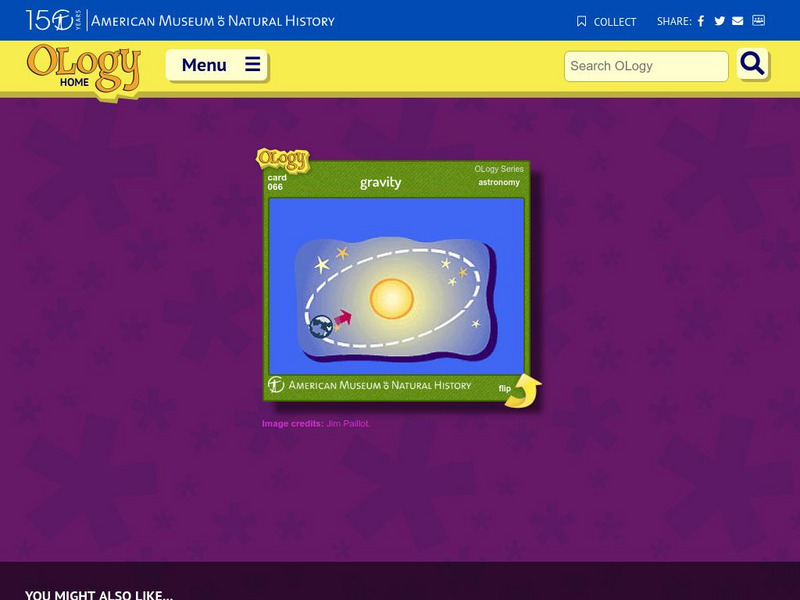



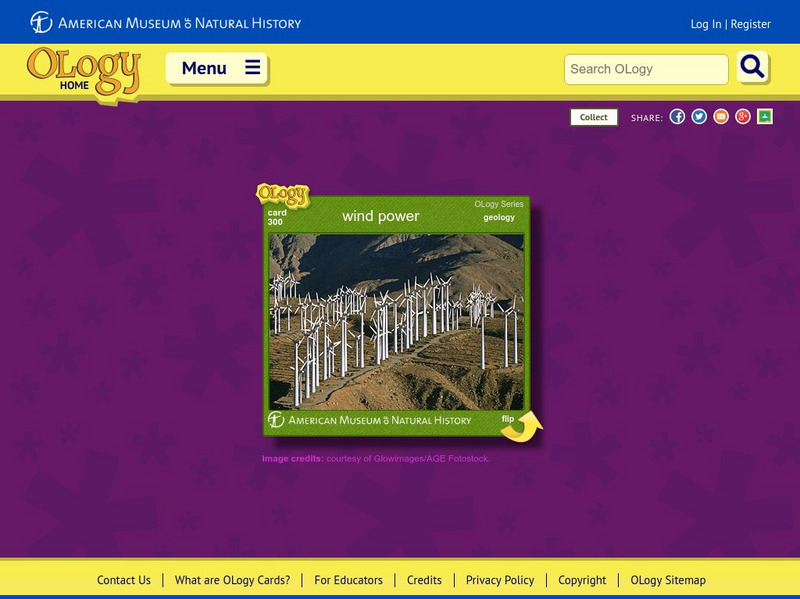



![Dinosaur Depot Museum: The Dinosaurs of Marsh and Cope [Pdf] Primary Dinosaur Depot Museum: The Dinosaurs of Marsh and Cope [Pdf] Primary](https://content.lessonplanet.com/knovation/original/370665-1b32c38686322a4259939e78352816d6.jpg?1661188997)



